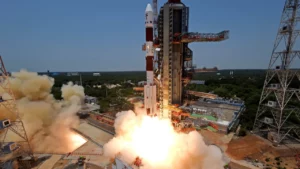India launches first mission following its historic moon landing
India launches first mission following its historic moon landing

India launched its first spacecraft dedicated to studying the sun, building on a month of historic successes for the country’s civil space efforts.
The spacecraft, called Aditya-L1, launched from Sriharikota, an island off the Bay of Bengal, at 11:50 a.m. Saturday local time (2:20 am ET). And it’s headed to a parking spot in orbit about 930,000 miles (1.5 million kilometers) from Earth.
The successful liftoff of Aditya-L1 comes less than two weeks after India’s space agency, the Indian Space Research Organization, made history by landing its Chandrayaan-3 spacecraft on the lunar surface. The achievement made India only the fourth nation in the world — and the second in the 21st century — to land a vehicle safely on the moon.
That mission is expected to conclude next week.
Meanwhile, Aditya-L1 is heading for its destination at Lagrange point 1, an area that lies between the sun and Earth where the gravitational pull of both celestial objects cancel each other out. That location will allow Aditya-L1 to remain in orbit, in a position optimal for observing the sun’s activities, with minor fuel consumption.
This position “will provide a greater advantage of observing the solar activities and its effect on space weather in real time,” according to the space agency.
The spacecraft is equipped with seven scientific instruments, four of which will be trained directly on the sun while the others will study solar wind particles and magnetic fields passing through at Lagrange point 1.
The main goals of the mission include studying the sun’s upper atmosphere and various solar phenomenon, such as coronal mass ejections — or massive expulsions of plasma from the sun’s outermost layer.
The information gleaned from Aditya-L1’s experiments will provide a clearer picture of space weather, or the term used to describe the magnetic waves rippling through our solar system. Space storms can have an impact on Earth when they reach our atmosphere, occasionally affecting satellites, radio communications and even power grids, according to the US National Oceanic and Atmospheric Administration.
India’s Aditya-L1 will add to information gathered on other missions designed to study the sun, including NASA’s ongoing Parker Solar Probe that in 2021 became the first spacecraft to “touch” the sun.
India’s first dedicated solar mission adds to the country’s status as an emerging space superpower.

